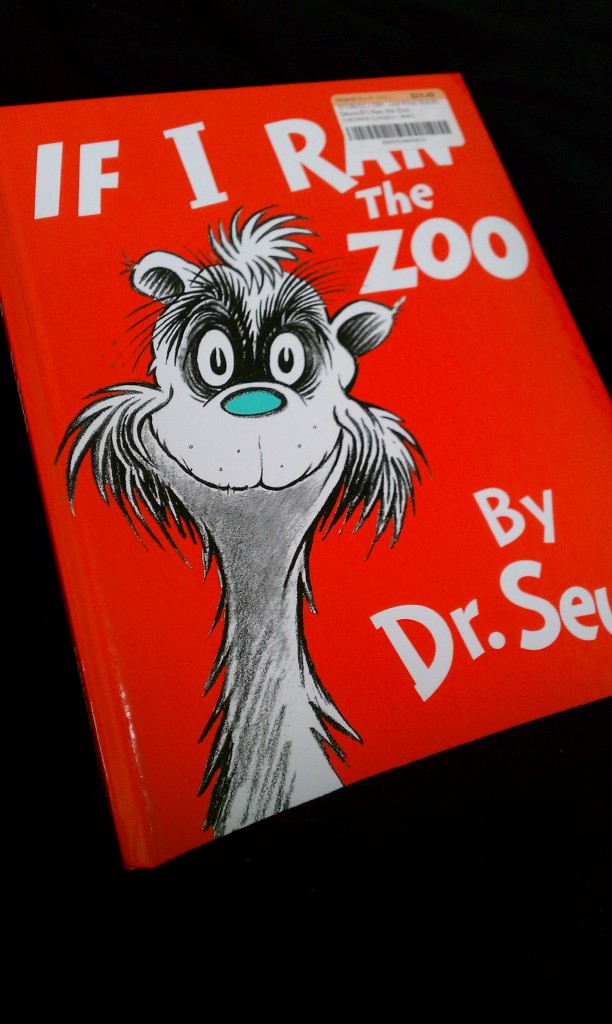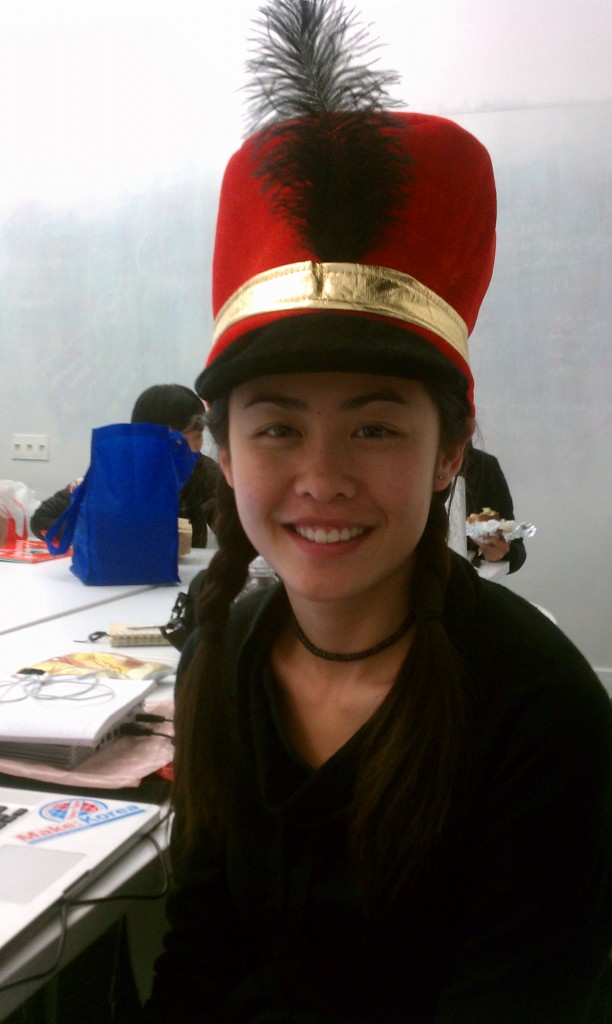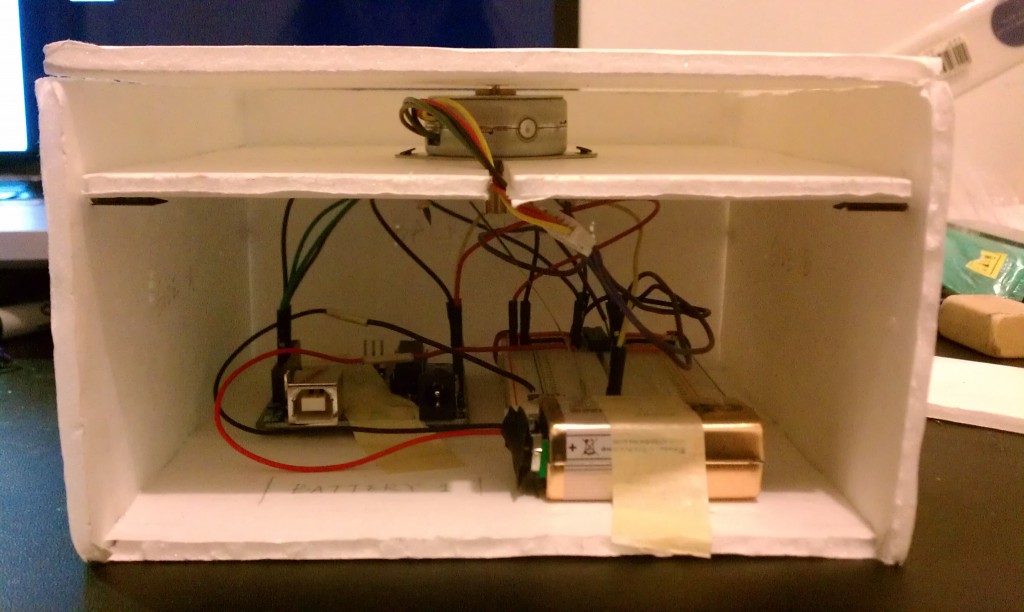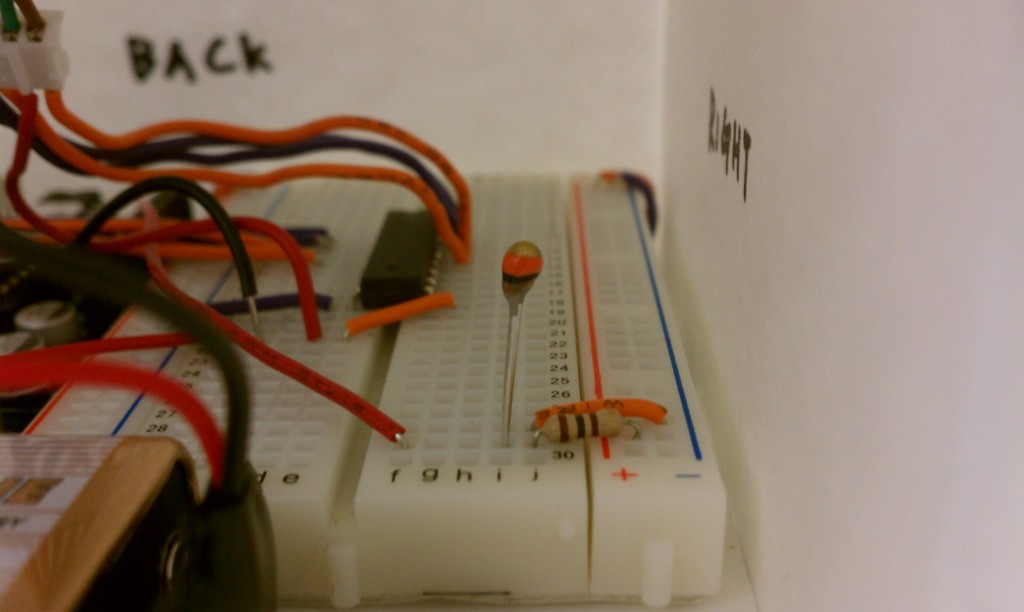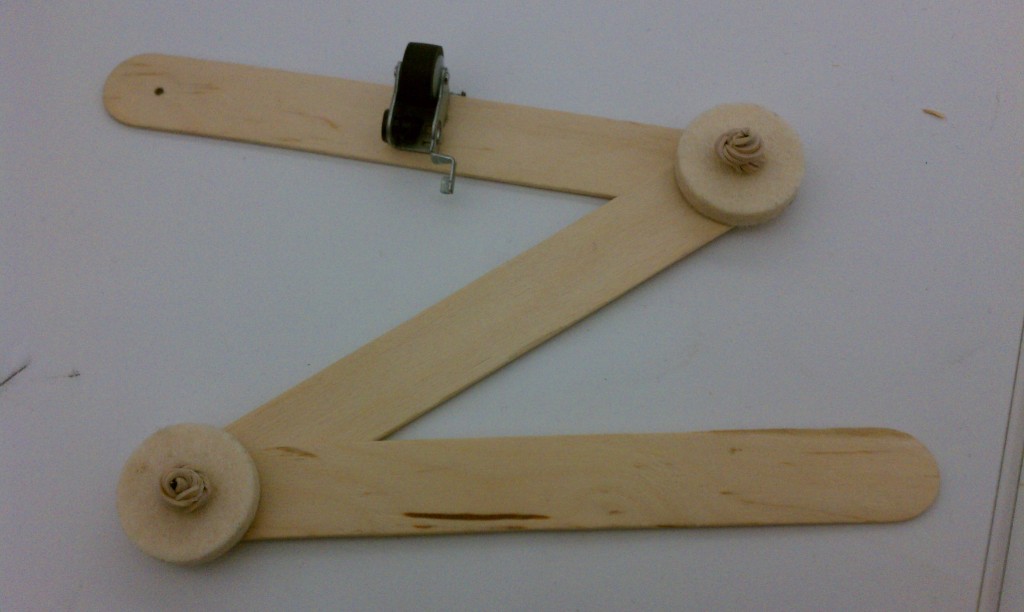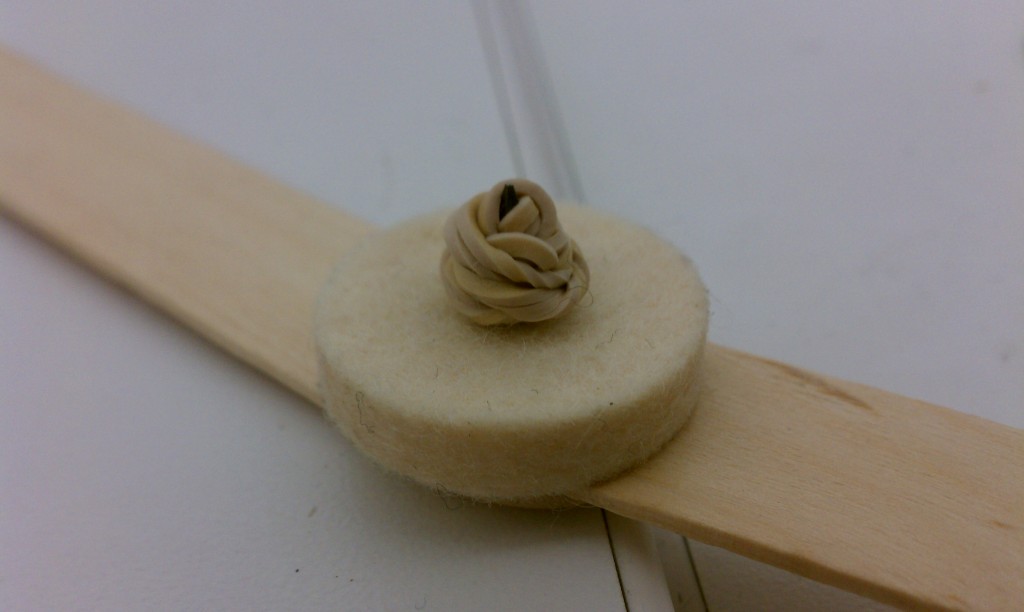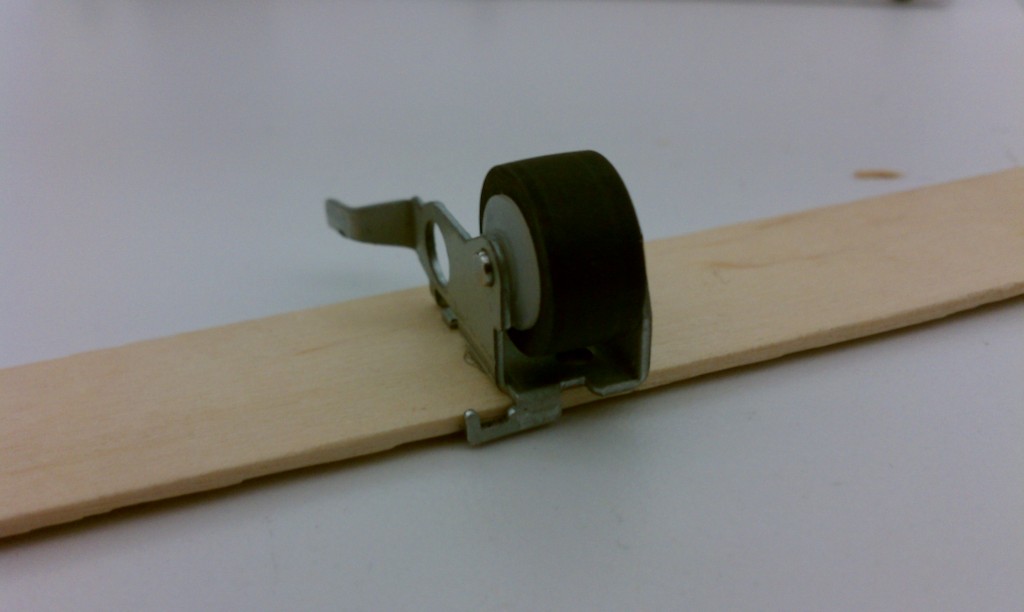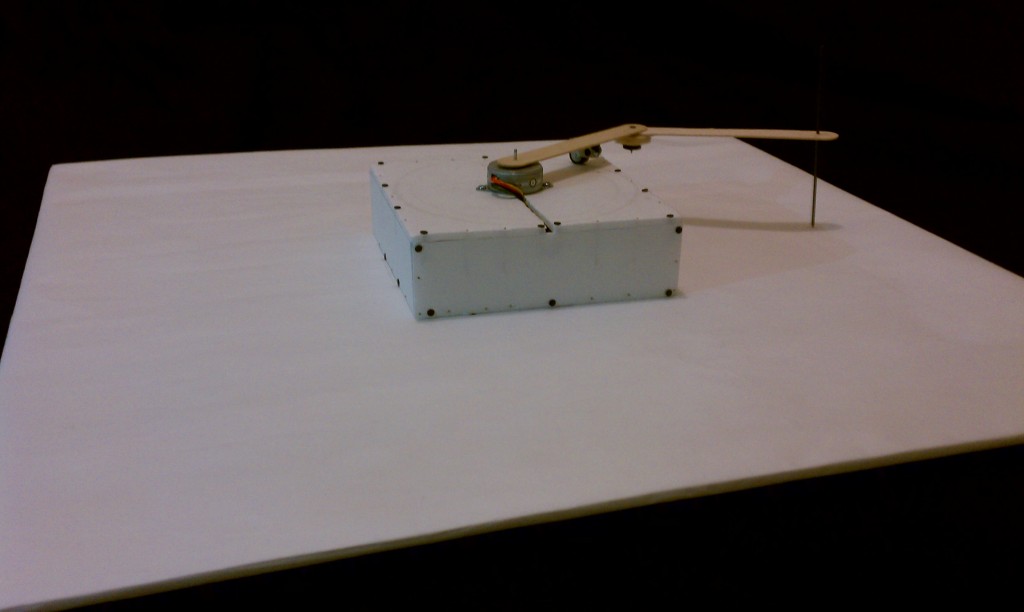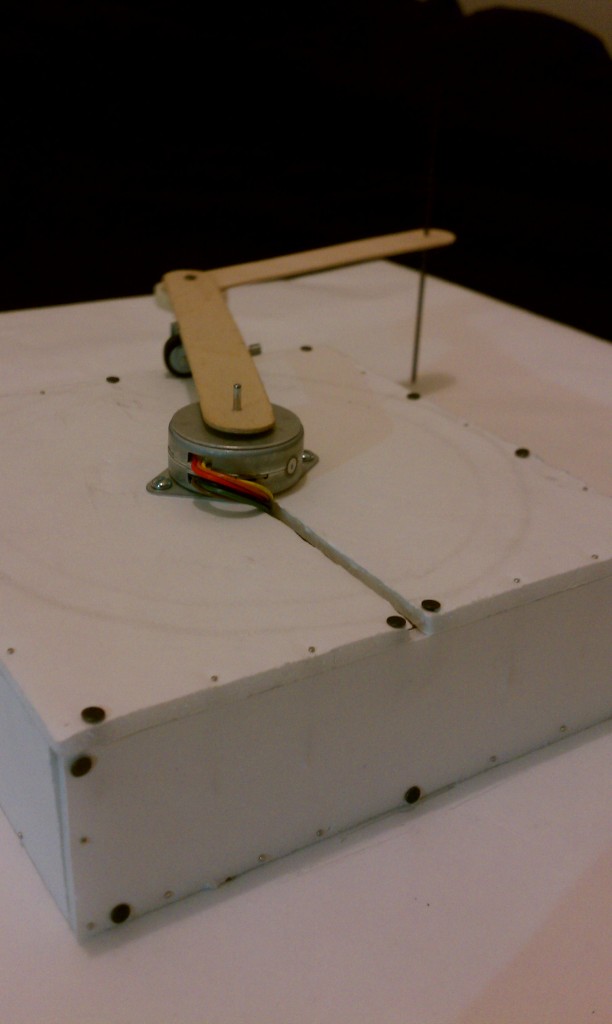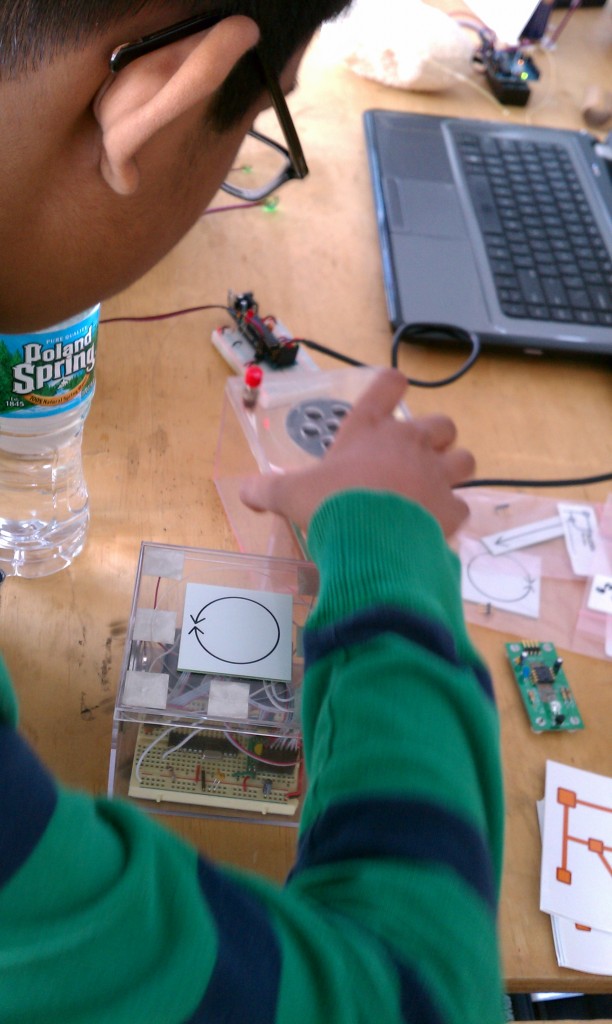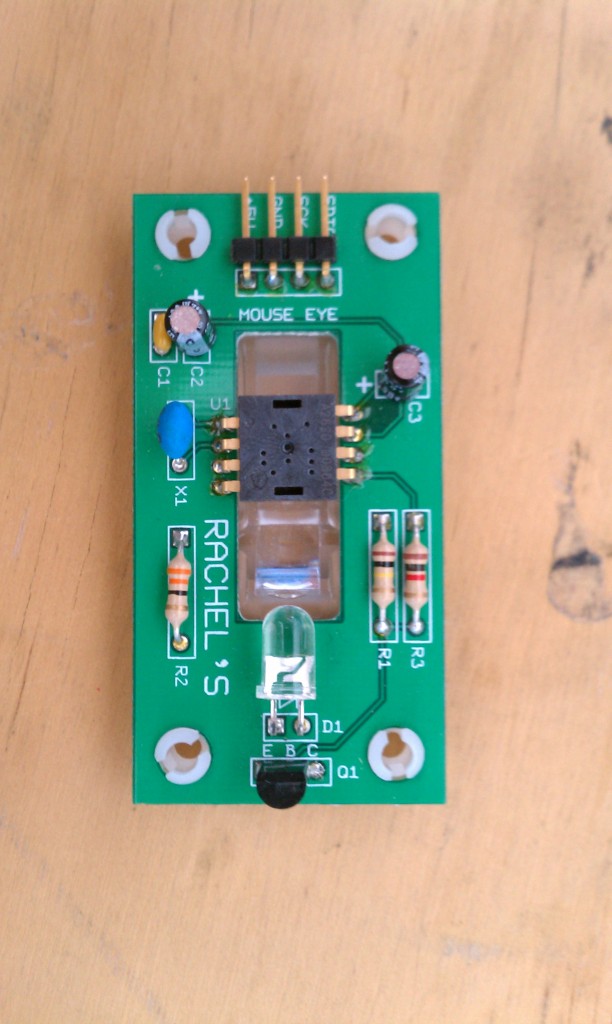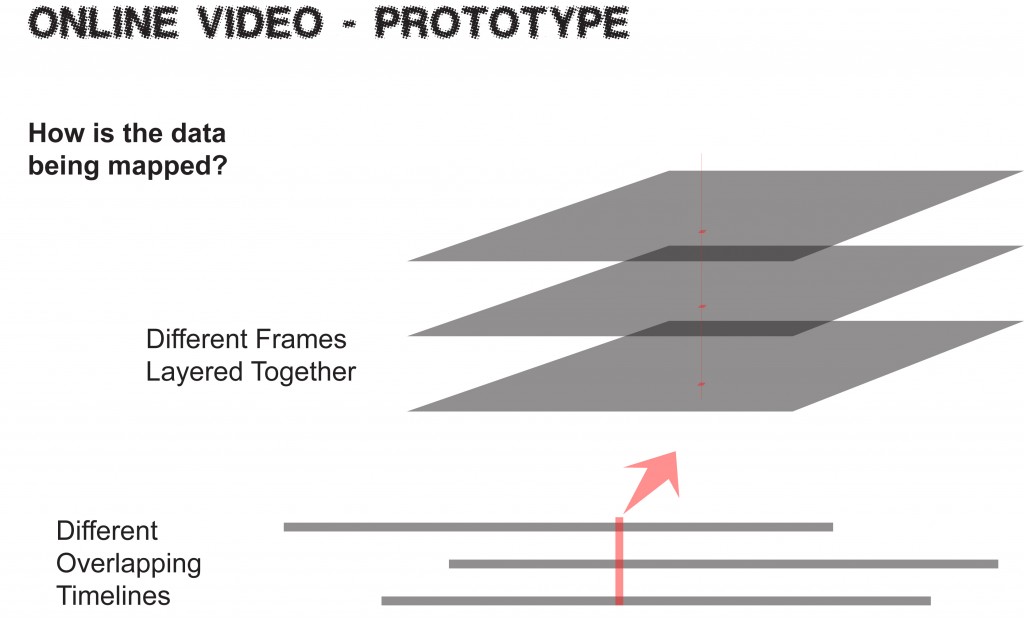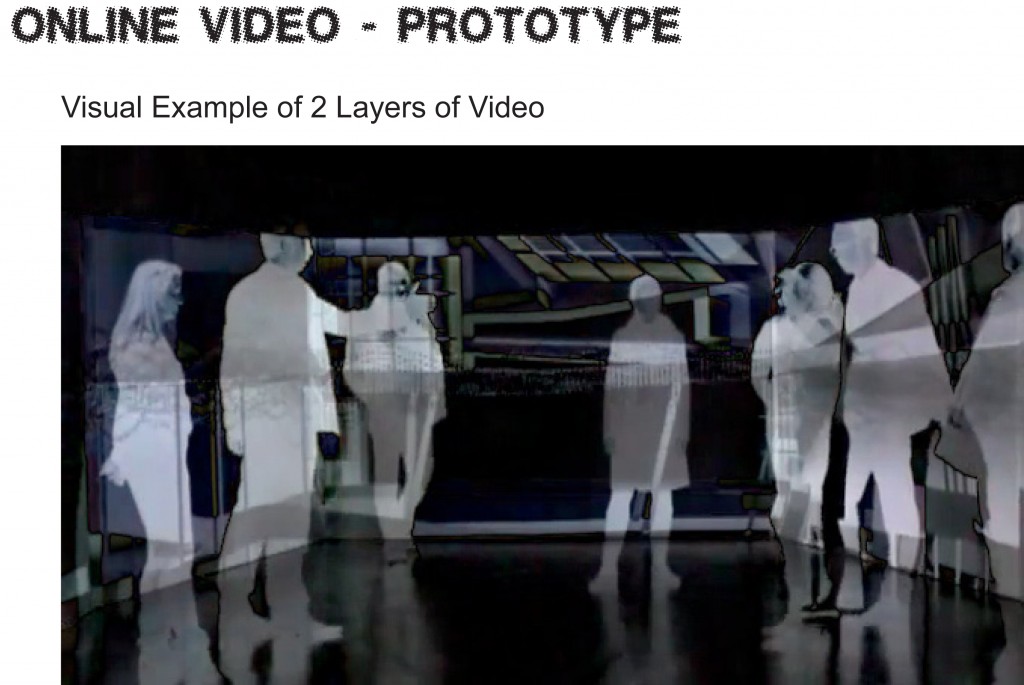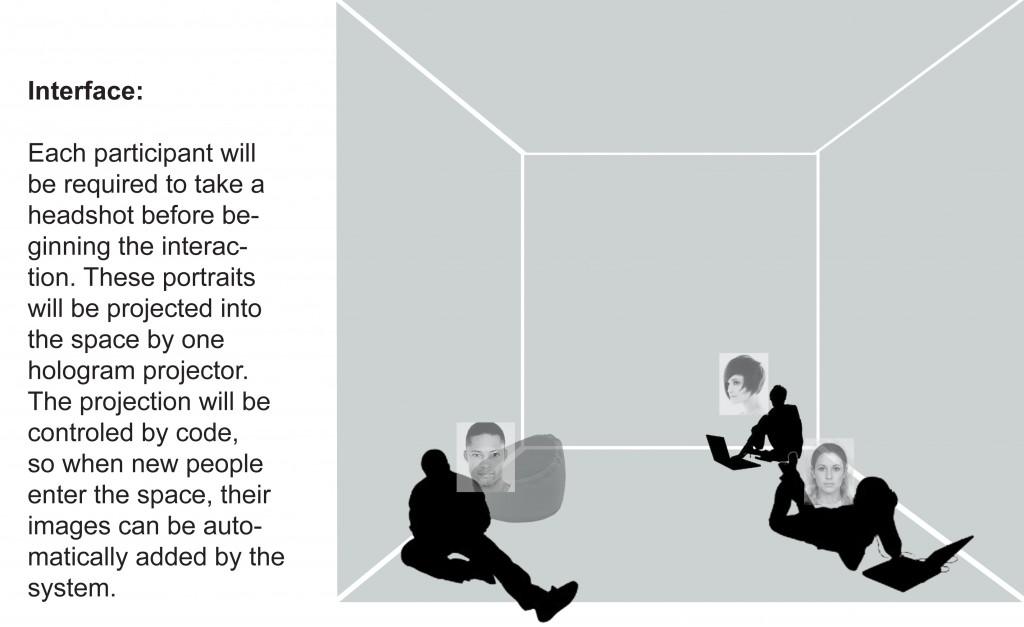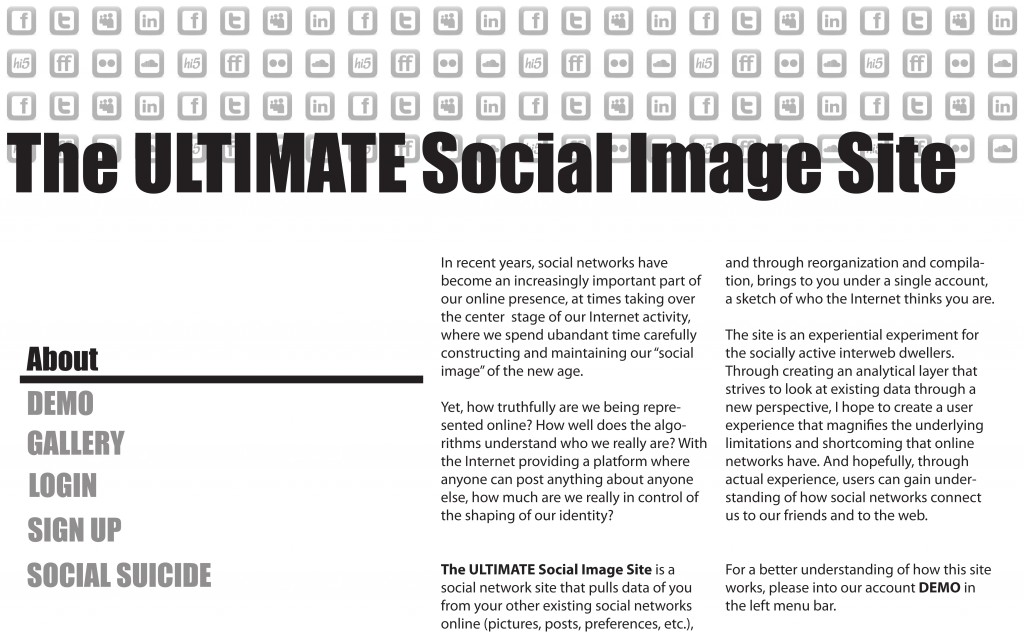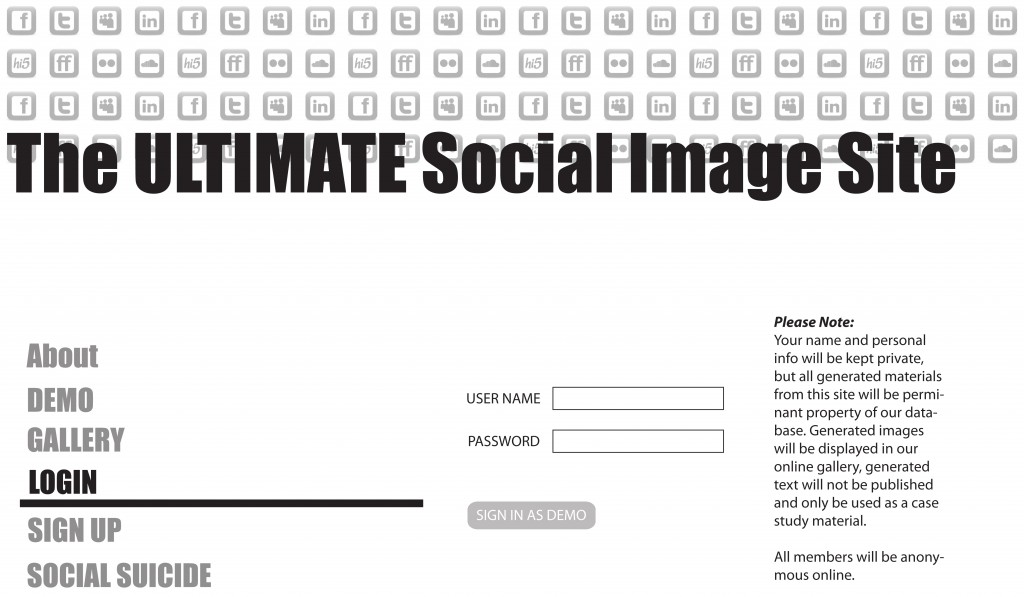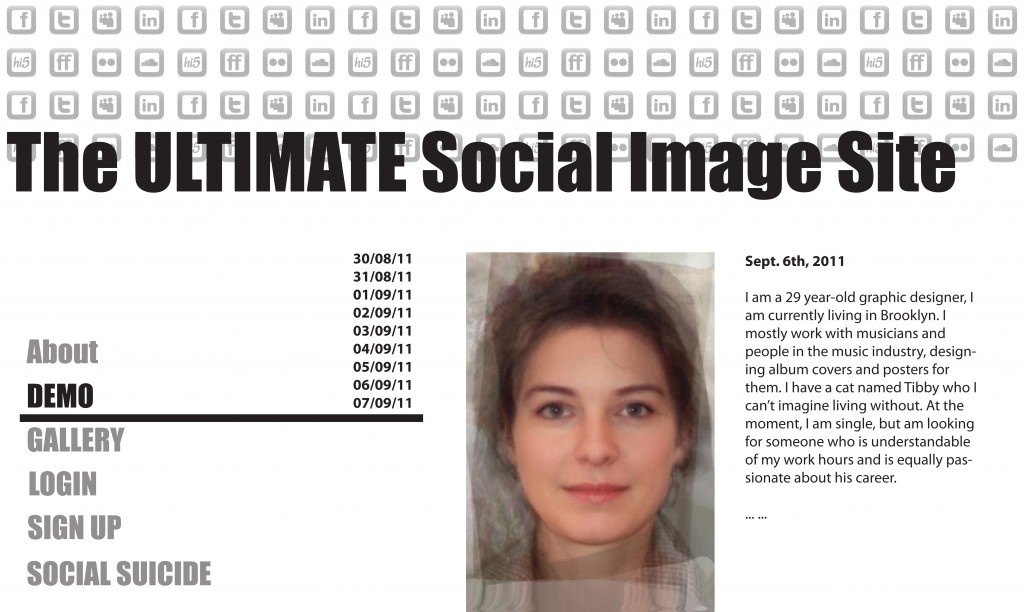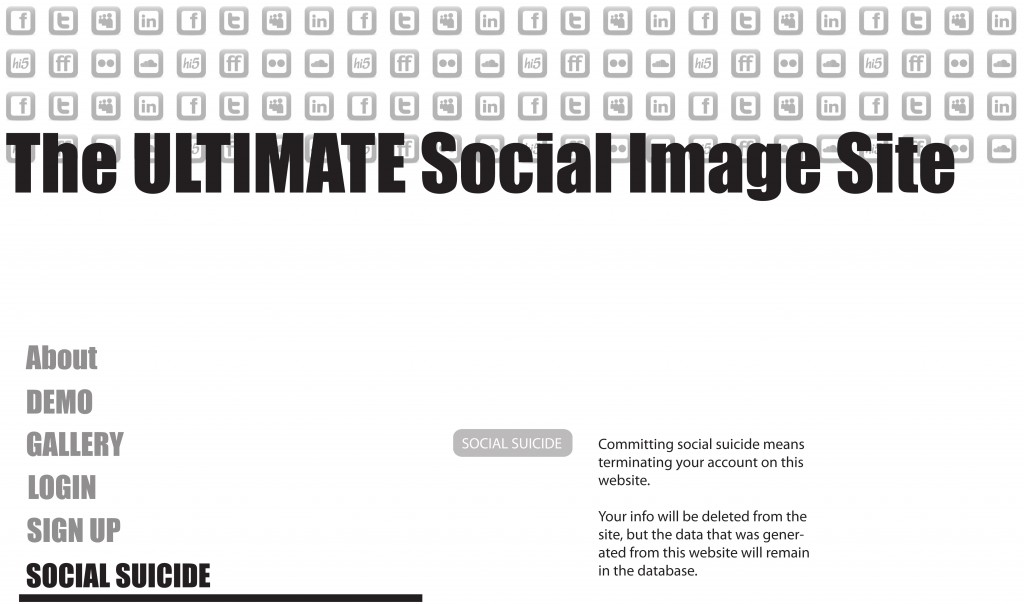The week I did my 7 & 7 projects was the week I had the most diverse experiences since my arrival. The city encompassed so many contradictions that it seemed almost fictional. I had lived in the States previously, but NY was something else. For over a month, I had been waiting for the realization of “I’m in America” to hit, but that never came (and I’m still waiting to this day), this was in no way like the US of my past experiences.
My 7 & 7 projects are starting ideas that attempt to document/express my experiences and reflections within this surreal environment.
Day 1
For my first project, I documented my process in building a bookcase. This was the last chapter of my home setup. Due to my lack of experience in building furniture (much like my lack of experience in living and studying here), the whole process was very much like my experience in NY and at Parsons, the reality resembled the manuscript, but not in the way you imagined. There were often unexpected differences and difficult situations. I printed out my picture documentations, and juxtaposed them next to the images in the manuscript with notes to display the deviation.


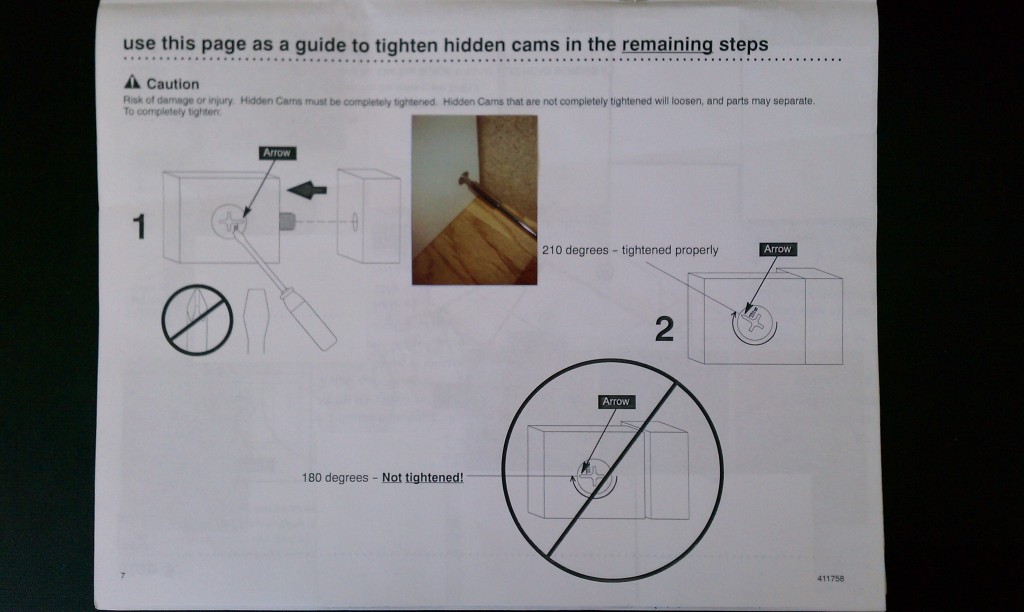
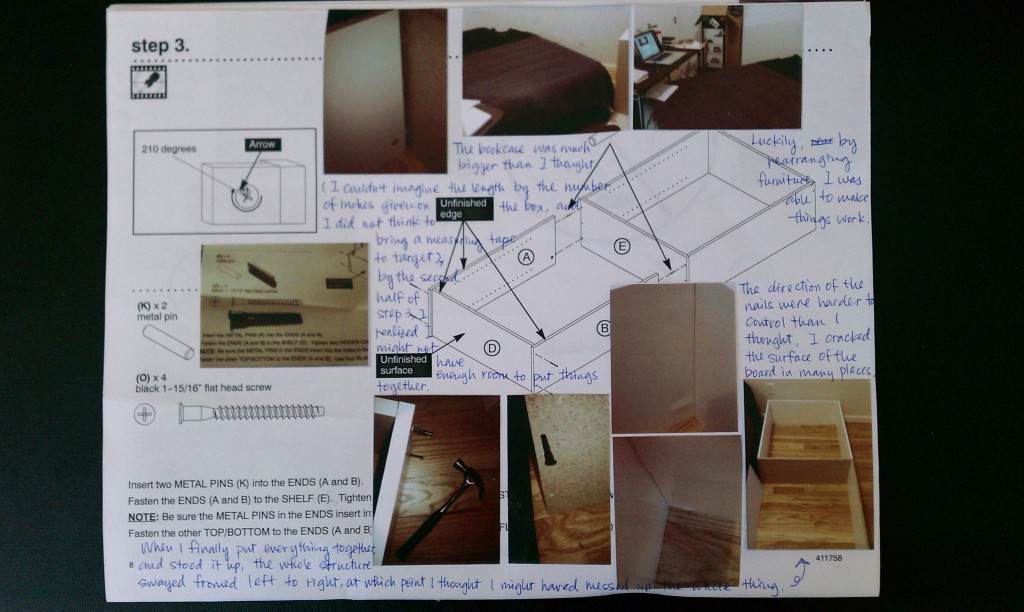
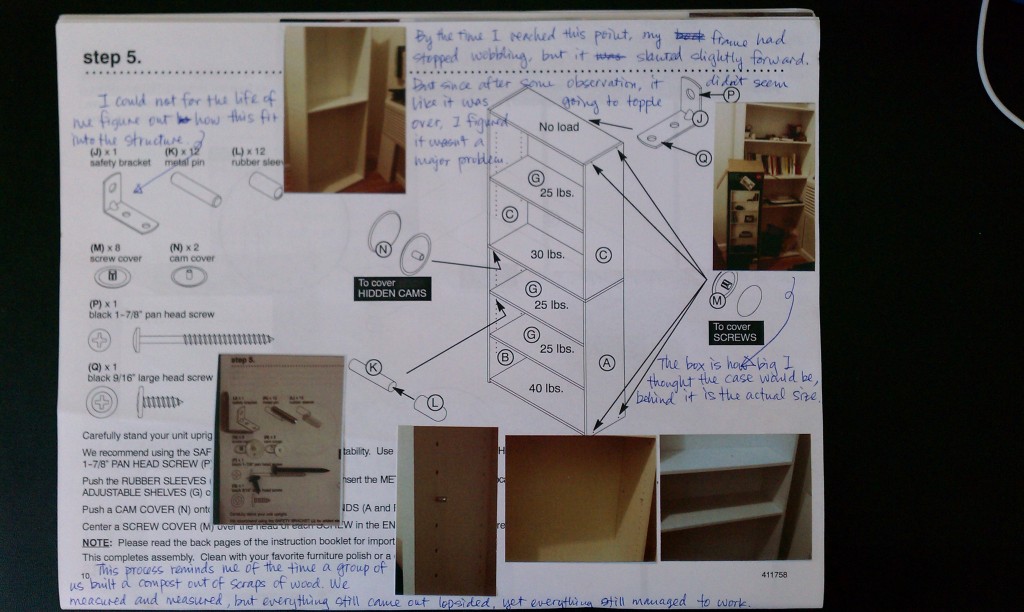
Day 2
I went to Fashion Night Out to observe the beautiful and glamorous. There were all sorts of crazy elaborate things happing all over the place. Soho was one of the hot spots with live models in shop windows, designers creating fashion-wear for customers on the spot, free cocktails stands and walls plastered with dollar bills. It was exciting, but also disturbingly superficial and wasteful. The whole night was a portrayal of a commercialized, appearance – oriented lifestyle, that for that one night only, allowed want-to-be participants, who on regular days would not be allowed in (and ironically were still not allowed into the more exclusive parties and gatherings), to take part in the illusion.
For my project, I documented outfits of people on the street and superimposed lyrics of pop songs that illustrated said lifestyle onto the image, suffocating the characters in text.
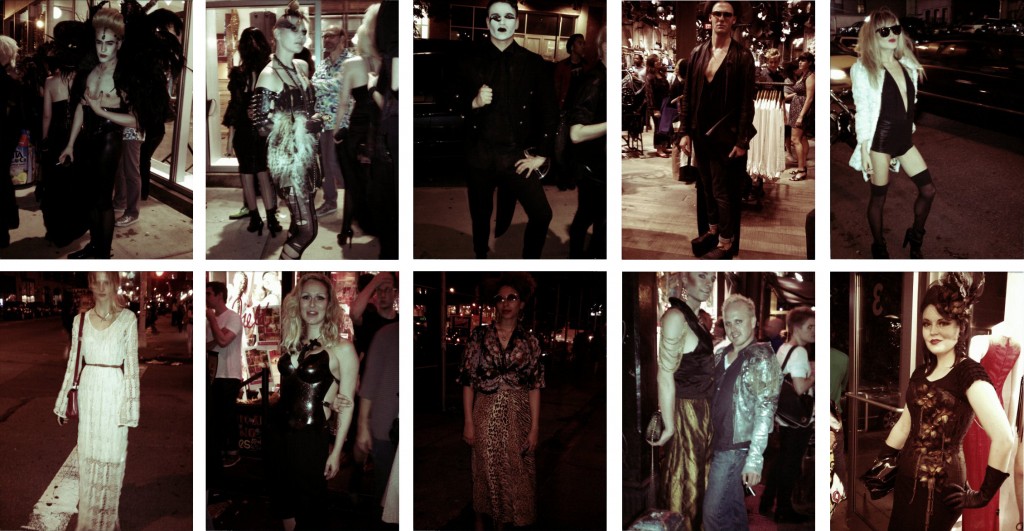
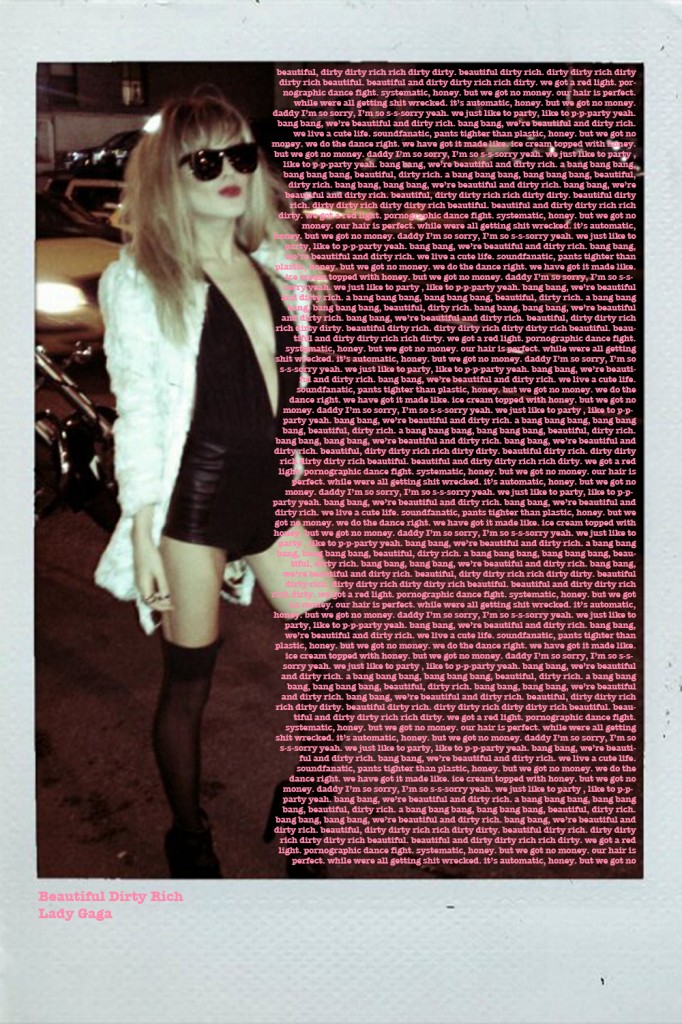
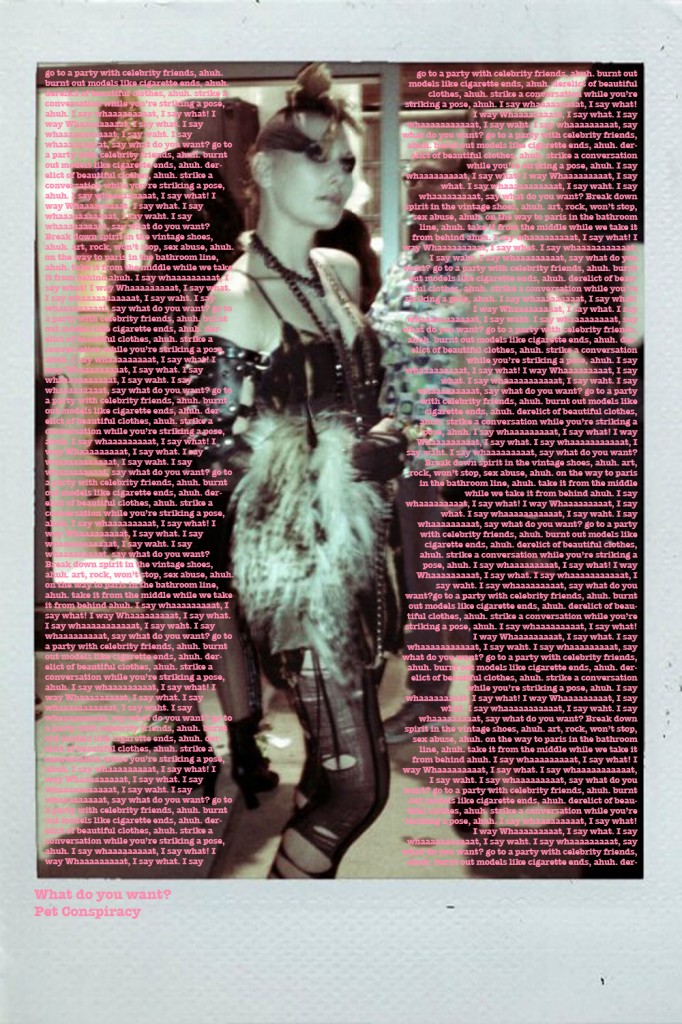
Day 3
In my Set Pixel class, we were given a code that allowed us to merge multiple images into one by means of averaging. I composited two images, one of portraits of me taken while I was living in the United States, and one while I was in China. As can be seen now, the time I spend in the States was mostly childhood, while adolescent years were mainly in China. I plan to continue adding images to the result. Presumably, as my travel patterns become more dense, diverse and evenly distributed, the images of me in each place will become increasingly interesting.

 Day 4
Day 4
The neighborhood I live in is very different from what I’ve been used to, and it’s interesting because it consists of elements that I find extremely contradicting. Throughout the week, there there have people shooting guns in the street, ice cream trucks driving around, children running and playing on the playground at the nearby school, numerous policemen patrolling the cross street and setting up scanning stands in the subway, Jews coming into the area to manage their real estate … I attempted to make a photo collage by putting all events and elements into one environmental image, but unfortunately the prototype was unsuccessful.
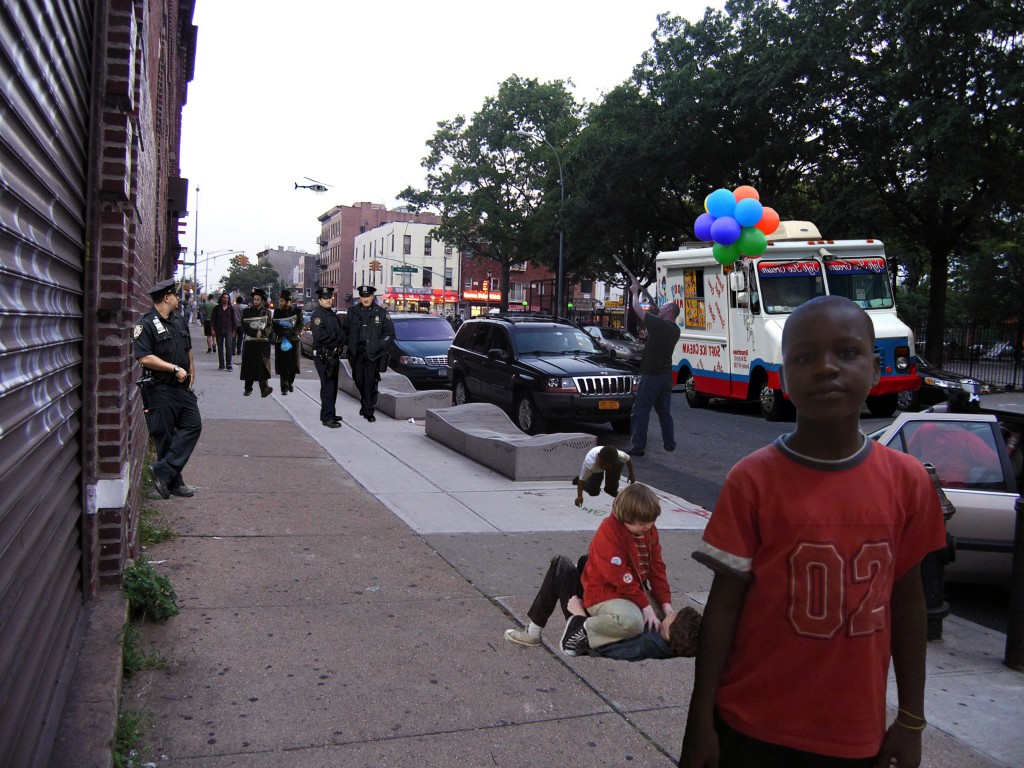
I think one of the problems I had was making using online images instead of actual documentation, which weakened the effect. A direction for future iterations can be a timelapse of selected images taken from a single camera that was set in one place that periodically took snapshots of the street. Multiple angles of different parts of the area can be documented in this way. The end result would be a collection of photographs.
Day 5
I was really interested in the topic I chose for day 4, and I wanted to do another iteration of it with sound, so I made a sound montage of different elements for day 5.
Day 5
Due to unprofessional recording equipment and lack of time, the current version is far from ideal. However, I plan continue with this idea and document sound from the area. I am thinking of combining Day 4 and Day 5 projects in future.
Day 6
When I first moved to the NY, I was completely out of my comfort zone, it was extremely hard to be myself, I felt the city was shaping the way I behaved and communicated in ways I could not control. But as weeks passed, I began to reclaim my personality and identity. For day 6, I combined the map of Manhattan with my own portrait, and through a series of images, displayed the process of my own face emerging form the behind the city map.

Day 7
On the last day of the week, I began my first job (non-school work) ever in America. I served as translator for the National Committee for 2 lunches on the 13th and 14th of Sept. The job opened up to me another social side of New York City : the powerful, the wealthy and the well educated. People talked about yacht clubs and mansions, of having 4 chefs and private helicopters, of lunches with princes and dinners with ambassadors (I’m guessing these would be the 1%). Although I documented some of the happenings during the two days, I am not authorized to use the material in any way. So I can only post a picture of the lunch menu below.


